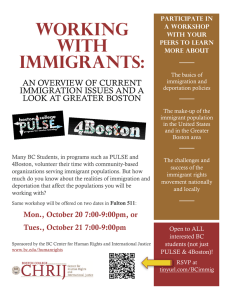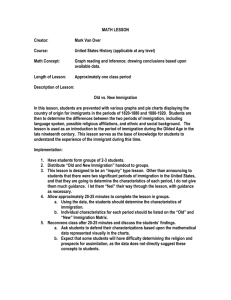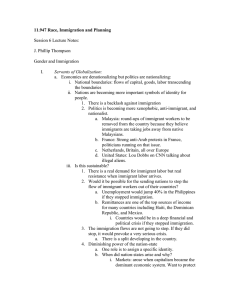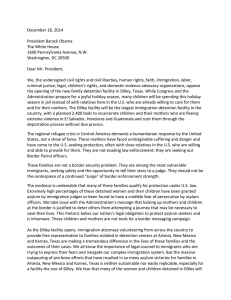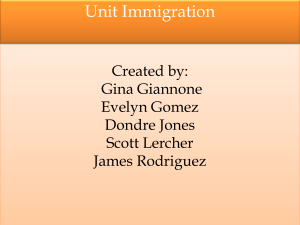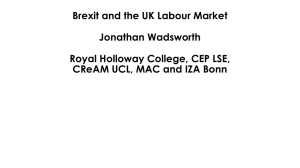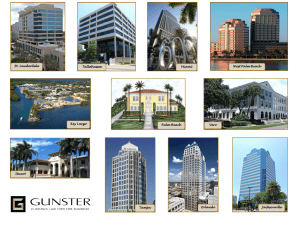EOI Standards & Objectives Review & Notes Coach Meek US History
advertisement
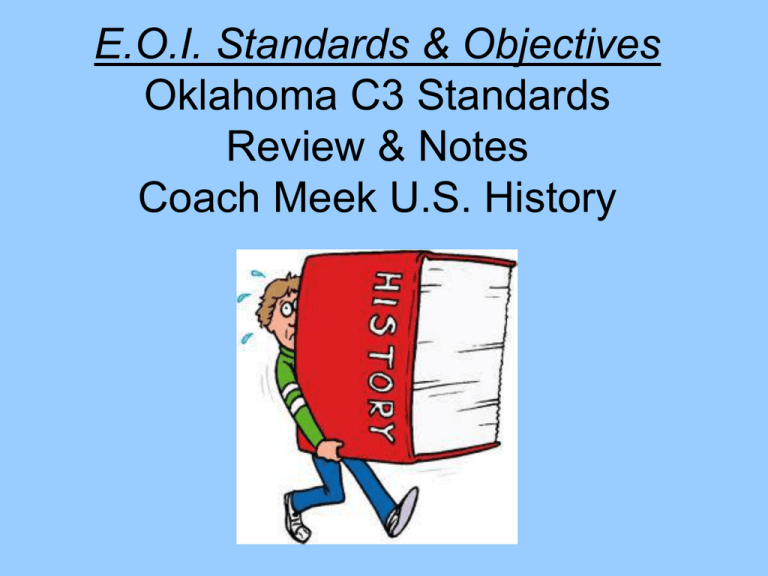
E.O.I. Standards & Objectives Oklahoma C3 Standards Review & Notes Coach Meek U.S. History Content Standard 1:The Student will analyze the transformation of the United States through its civil rights struggles, immigrant experiences, settlement of the American West, and the industrialization of American society in the Post-Reconstruction through the Progressive Eras, 1865-1900 BRAINSTORM!!!!!!!!!!!!! 1: Cite specific textual and visual evidence to analyze the post-Reconstruction civil rights struggles • A. Examine the purposes and effects of the 13th, 14th, &15th Amendments • B. Assess the impact of Black Codes, Jim Crow Laws, and the actions of the Ku Klux Klan 2. Integrate specific textual and visual evidence to analyze the impact of Westward Movement and immigration on migration, settlement patterns in American society, economic growth, and Native Americans • A. Summarize reasons for immigration, shifts in immigration patterns, and the immigrant experience including the Chinese Exclusion Act, the impact of Nativism, Americanization, and the immigrant experiences at Ellis Island • B. Examine the rationale behind federal policies toward Native Americans including the establishment of reservations, attempts at assimilation, the end of the Indian Wars at Wounded Knee, and the impact of the Dawes Act on tribal sovereignty and land ownership. • C. Compare the contrasting view points of Native American leadership’s resistance to United States Indian policies as evidenced by Red Cloud and his Cooper Union speech, Seattle, Quanah Parker, and Chief Joseph as expressed in his I Will Fight No More Forever speech. 3. Evaluate the impact of industrialization on the transformation of American society, economy, and politics • • • • • • • • A. Analyze the impact of leading industrialists as “robber barons” and as “philanthropists” including John D. Rockefeller and Andrew Carnegie and is Gospel of Wealth essay on American society. B. Identify the impact of new inventions and industrial production methods including new technologies by Thomas Edison, Alexander G. Bell, and the Bessemer Process. C. Evaluate the contributions of muckrakers including Ida Tarbell and Upton Sinclair that changed government policies regarding child labor, working conditions, and the Sherman Anti-Trust Act. D. Analyze major social reform movements including the Women’s Suffrage and Temperance Movement and their significant leaders including Susan B. Anthony, Alice Paul, and Jane Addams E. Evaluate the significance of the Labor Movement on the organization of workers including the impact of the Pullman strikes, the Haymarket Riot, and the leadership of Eugene V. Debs. F. Evaluate the rise and reforms of the Progressive Movement including direct primary, initiative petition, referendum, and recall. The impact of William Jennings Bryan and his Cross of Gold speech on the political landscape. Conservation of the environment under the leadership of Theodore Roosevelt. Analyze the 16th, 17th, 18th, 19th, and 21st amendments to the United States Constitution. G. Assess and summarize changing race relations as exemplified in the Plessy v. Ferguson case. H. Cite specific textual and visual evidence to compare and contrast early civil rights leadership including the viewpoints of Booker T. Washington, W.E.B. DuBois, and Marcus Garvey in response to rising racial tensions, and the use of the poll taxes and literacy tests to disenfranchise blacks and poor whites. E.O.I. Practice ? • Which U.S. Supreme Court decision set the standard for practices like the one pictured? A. Plessy V. Ferguson B. Roe V. Wade C. U.S. v. Nixon D. Gideon v. Wainwright E.O.I. Practice ? • The photo on the right is of the Pullman Company strike. Which type of organization do you believe was behind this? A. National Organization for Women B. American Railway Union C. Black Panthers D. NAACP E.O.I. Practice ? • In what way do you think the rise in immigration of the late 1800’s led to the rise in Nativism? A. U.S. citizens still felt animosity towards immigrants left over from WWI. B. U.S. citizens did not want another attack on U.S. soil like Pearl Harbor C. Immigrants could possibly take jobs from American citizens D. Americans felt that immigration would lead to the formation of labor unions. E.O.I. Practice ? • The events on the flyer are probably the result of which federal Act? A. Dawes Act B. Neutrality Act C. Lend-Lease Act D. Civil Rights Act E.O.I. Practice ? “There were men who worked in the cooking-rooms, in the midst of steam and sickening odors, by artificial light; in these rooms the germs of tuberculosis might live for two years, but the supply was renewed every hour. There were the beef-luggers, who carried twohundred-pound quarters into the refrigerator-cars; a fearful kind of work, that began at four o’clock in the morning, and that wore out the most powerful men in a few years”-Upton Sinclair’s The Jungle The author Upton Sinclair would best be described by which of the following terms? A. Yellow journalist B. Carpetbagger C. Scalawag D. Muckraker E.O.I. Practice ? • In which of the following areas would the Progressive Movement have had the most profound impact? A. U.S. imperial expansion B. Restrictive immigration policies C. The decision to use the atomic bomb to end WWII. D. Working conditions for employees E.O.I. Practice ? -Which of the following rights for black American men would have been protected by the documents on the right? A. Right to Free Speech B. Right to Bear Arms C. Right to a Trial by Jury D. Right to vote in elections


